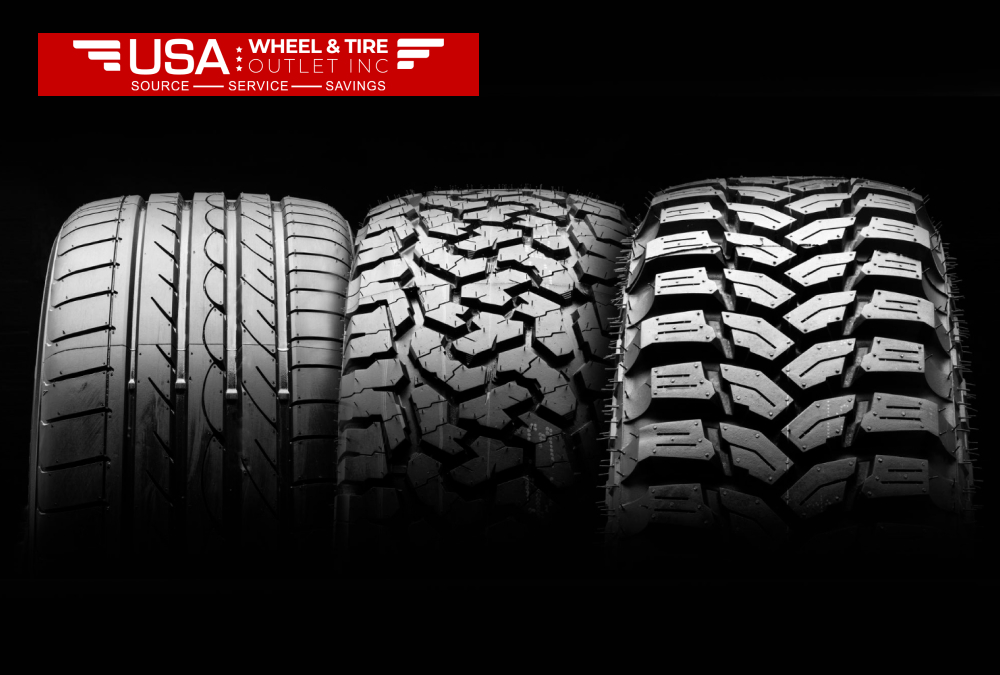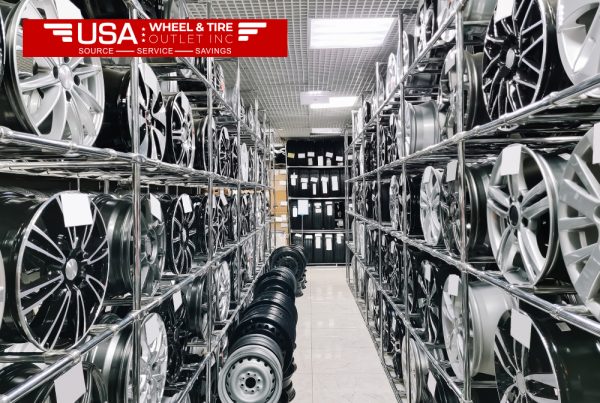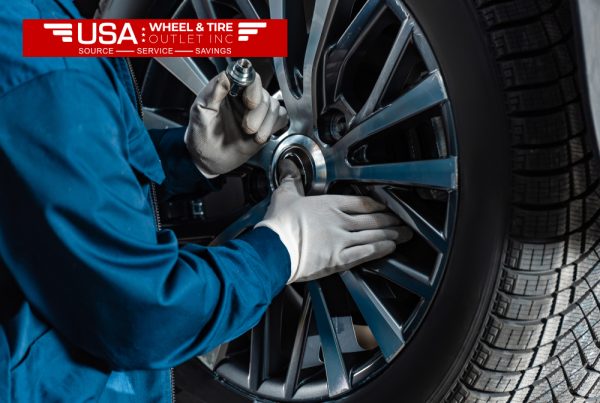When it comes to maintaining your truck, choosing the right tire size is the most important. Tires play a key role in the performance, safety, and comfort of your vehicle. Whether you are replacing worn-out tires or upgrading to a larger size, knowing what size tires will fit your truck is crucial for a smooth ride. In this guide, we will break down how to determine the right tire size, understand truck tire fitment, and make sure your wheels are compatible with your new tires.
Tire Sizes
Tire sizes can seem complicated, but they follow a specific format consistent across most vehicles. Typically, you’ll see tire sizes like P255/70R18 or LT275/65R20 printed on the sidewall of the tire. Let’s break down what each part of the tire size means. At USA Wheels & Tires Outlet INC, we provide expert guidance to help you choose the right tire size for your vehicle, ensuring optimal performance and safety.
P or LT: It specifies the type of tire. “P” is for passenger tires, and “LT” is for light truck tires. Light truck tires are lighter, yet they have loads to carry and are also hard-wearing for trucks.
255 or 275: This number shows how wide the tire is, in millimeters. A higher number means a wider tire and this means better traction but worsened fuel efficiency.
70 or 65: This is the aspect ratio, which indicates the height of the tire’s sidewall as a percentage of the tire’s width. A lower number means a shorter sidewall, which can improve handling and appearance.
R: The letter “R” stands for radial construction, which is the most common tire construction type.
18 or 20: The number refers to the diameter of the wheel in inches that the tire is meant to fit over.
Now, knowing how tire sizes work, it’s time to determine what will be a suitable size tire for your truck.
How to Know What Size of Tires Fit Your Truck
Finding the right tire size for your truck is a process that involves several factors. Here are the key steps you should follow to make the right choice:
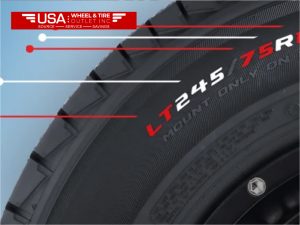
1. Check the Owner’s Manual
The owner’s manual of your truck is the best place to check for the recommended tire size. It has all the manufacturer’s specifications, including the correct width, aspect ratio, and diameter of the tire. These recommendations are based on the design of the vehicle and are intended to ensure optimal performance.
2. Check Your Existing Tires
If you are replacing your tires, the easiest way to determine what size tires will fit is by checking the sidewalls of your current tires. The tire size will be printed there, following the standard format discussed above. Make sure that the size on the sidewall matches the specifications in your owner’s manual. If you are upgrading to a larger size, you may need to check for additional compatibility with your truck’s wheel wells and suspension.
3. Use a Tire Size Calculator
A tire size calculator is a useful tool that helps you compare different tire sizes and their effects on your truck. You can input the current size of your tires and see how other sizes will impact things like ride height, speedometer readings, and clearance. A calculator will help you make informed decisions and ensure you pick the right size for your truck.
4. Consider Your Truck’s Purpose
Think about how you drive your truck. If you’re often off-roading or towing heavy payloads, you may want to look for tires slightly larger or with an aggressive tread. If you drive mainly on the highway, you might desire a tire size that promotes a smooth ride and great fuel efficiency. Take considerations like load capacity, the terrain you’ll encounter, and your driving habits into deciding on a new tire size for your truck.
5. Seek the Advice of a Tire Specialist
If you are not sure about the proper truck tire size for your truck, you can seek the help of a professional tire dealer or a mechanic. Based on the specifications of your truck and driving needs, he can give you the best piece of advice. They may also ensure that the selected tire is suitable for the given wheel rims.
Truck Tire Fitment: Wheel Compatibility
The other important factor in choosing a new truck tire is the wheel compatibility, because not all tires may fit every rim size. Tire width and diameter must correspond to those of your truck’s wheels for appropriate fitment. Consider the following factors:
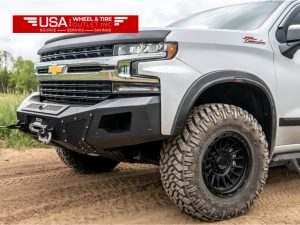
1. Tire width vs. rim width
The tire must have the same width as your rim width. Installing a tire that is either too wide or too narrow than your rim can result in poor performance and bad handling or even damage your tire. Every tire size has an optimal range of rims that it can fit. A P255/70R18 tire, for instance, fits a rim width between 7 to 9 inches. Be sure to check your truck’s wheel specifications for proper fitment.
2. Tire Diameter vs. Rim Diameter
The diameter of the tire should be the same as that of the wheel rim. If you are upgrading to a bigger or smaller tire size, make sure that the diameter of the new tire is suitable for your
truck’s wheels. For example, a P255/70R18 tire will only fit an 18-inch rim, so you need to choose a compatible rim size.
3. Bolt Pattern and Offset
This besides, your consideration to purchase new wheels for your truck shall cover also, bolt pattern and offset; how would you know the number of the bolts and the distance there between, and the other factor is the positioning or offset of the wheel, positioned on the axle side. Both factors may effect, in handling, ride as well as clearance of the vehicle.
How to Choose the Right Size of Tire
Choosing the right tire size for your truck is not just a question of fitting it. Other significant factors come into play to affect your driving experience.
1. Accuracy of Speedometer
The diameter of your truck tires may change the speedometer reading of your truck. If you select a tire size that is much bigger or smaller than the original, this might make your speedometer inaccurate. You can use the tire size calculator to evaluate what impact the new tire size will have on your speedometer.
2. Ride Comfort
The larger the tires with the bigger sidewall, it becomes quite rough, and smaller ones provide a comfortable ride. Determine how much comfort you need from your truck if you use it for daily commute.
3. Clearance and Suspension
The upgradation to the bigger tires enhances your truck’s off-road ability but decreases its wheel well clearance and even influences its suspension performance. Therefore, keep an eye on your truck’s suspension limits and check whether the bigger tires would be able to fit inside the wheel wells or not. Sometimes, a lift kit will be necessary for larger tires.
4. Load Carrying Capacity
If you are going to tow or haul heavy weights with your truck, you should opt for truck tires that have a higher load rating. Truck tires are classified in terms of their load index, which is the level of weight they can legally carry. For instance, if your truck is consistently used for hauling heavy loads, you might need to settle for tires with a higher load capacity.
Conclusion
Knowing what size tires will fit your truck is essential for ensuring safety, performance, and comfort. Whether you’re replacing worn-out tires, upgrading to larger ones, or choosing tires for a specific purpose like off-roading or towing, it’s crucial to consider factors such as wheel compatibility, ride comfort, and the intended use of your truck.
Use the guidelines outlined in this guide to determine the best tire size for your vehicle. Don’t hesitate to consult with professionals or use a tire size calculator to make an informed decision. By choosing the right tire size, you’ll maximize your truck’s performance and ensure a smooth, safe ride for years to come.
Read Also: Choosing the Right 215/55R17 Tires for Midsize Sedans
Frequently Asked Questions (FAQs) about Truck Tire Fitment
1. How can I tell which tire sizes will fit on my truck?
Inquire the owner manual from your truck, for recommended
tire size, and look at the sidewall of your existing tire. Use a tire size calculator for comparison.
2. Can I put larger tires on my truck?
Yes, but you have to make sure they’re compatible with your truck’s suspension, wheel wells, and rims. Bigger tires might need some modifications such as a lift kit.
3. What does “P255/70R18” on a tire mean?
This is the code for the tire size. “P” for passenger tires, 255 is the width in millimeters, 70 is the aspect ratio, R means radial construction, and 18 is the rim diameter in inches.
4. Does changing my size tires affect my truck’s performance?
Yes, the new size can affect many things, such as accuracy in the speedometer reading, handling, and even fuel efficiency. It’s crucial to make sure the new size is suitable for your truck’s needs.
5. How do I ensure my tires fit my truck’s wheels?
Make sure the tire’s width and diameter match your truck’s wheel specifications. The correct tire size should be compatible with the rim’s size and bolt pattern.

